6.2: Discover Diabetes
- Page ID
- 2411
\( \newcommand{\vecs}[1]{\overset { \scriptstyle \rightharpoonup} {\mathbf{#1}} } \)
\( \newcommand{\vecd}[1]{\overset{-\!-\!\rightharpoonup}{\vphantom{a}\smash {#1}}} \)
\( \newcommand{\id}{\mathrm{id}}\) \( \newcommand{\Span}{\mathrm{span}}\)
( \newcommand{\kernel}{\mathrm{null}\,}\) \( \newcommand{\range}{\mathrm{range}\,}\)
\( \newcommand{\RealPart}{\mathrm{Re}}\) \( \newcommand{\ImaginaryPart}{\mathrm{Im}}\)
\( \newcommand{\Argument}{\mathrm{Arg}}\) \( \newcommand{\norm}[1]{\| #1 \|}\)
\( \newcommand{\inner}[2]{\langle #1, #2 \rangle}\)
\( \newcommand{\Span}{\mathrm{span}}\)
\( \newcommand{\id}{\mathrm{id}}\)
\( \newcommand{\Span}{\mathrm{span}}\)
\( \newcommand{\kernel}{\mathrm{null}\,}\)
\( \newcommand{\range}{\mathrm{range}\,}\)
\( \newcommand{\RealPart}{\mathrm{Re}}\)
\( \newcommand{\ImaginaryPart}{\mathrm{Im}}\)
\( \newcommand{\Argument}{\mathrm{Arg}}\)
\( \newcommand{\norm}[1]{\| #1 \|}\)
\( \newcommand{\inner}[2]{\langle #1, #2 \rangle}\)
\( \newcommand{\Span}{\mathrm{span}}\) \( \newcommand{\AA}{\unicode[.8,0]{x212B}}\)
\( \newcommand{\vectorA}[1]{\vec{#1}} % arrow\)
\( \newcommand{\vectorAt}[1]{\vec{\text{#1}}} % arrow\)
\( \newcommand{\vectorB}[1]{\overset { \scriptstyle \rightharpoonup} {\mathbf{#1}} } \)
\( \newcommand{\vectorC}[1]{\textbf{#1}} \)
\( \newcommand{\vectorD}[1]{\overrightarrow{#1}} \)
\( \newcommand{\vectorDt}[1]{\overrightarrow{\text{#1}}} \)
\( \newcommand{\vectE}[1]{\overset{-\!-\!\rightharpoonup}{\vphantom{a}\smash{\mathbf {#1}}}} \)
\( \newcommand{\vecs}[1]{\overset { \scriptstyle \rightharpoonup} {\mathbf{#1}} } \)
\( \newcommand{\vecd}[1]{\overset{-\!-\!\rightharpoonup}{\vphantom{a}\smash {#1}}} \)
\(\newcommand{\avec}{\mathbf a}\) \(\newcommand{\bvec}{\mathbf b}\) \(\newcommand{\cvec}{\mathbf c}\) \(\newcommand{\dvec}{\mathbf d}\) \(\newcommand{\dtil}{\widetilde{\mathbf d}}\) \(\newcommand{\evec}{\mathbf e}\) \(\newcommand{\fvec}{\mathbf f}\) \(\newcommand{\nvec}{\mathbf n}\) \(\newcommand{\pvec}{\mathbf p}\) \(\newcommand{\qvec}{\mathbf q}\) \(\newcommand{\svec}{\mathbf s}\) \(\newcommand{\tvec}{\mathbf t}\) \(\newcommand{\uvec}{\mathbf u}\) \(\newcommand{\vvec}{\mathbf v}\) \(\newcommand{\wvec}{\mathbf w}\) \(\newcommand{\xvec}{\mathbf x}\) \(\newcommand{\yvec}{\mathbf y}\) \(\newcommand{\zvec}{\mathbf z}\) \(\newcommand{\rvec}{\mathbf r}\) \(\newcommand{\mvec}{\mathbf m}\) \(\newcommand{\zerovec}{\mathbf 0}\) \(\newcommand{\onevec}{\mathbf 1}\) \(\newcommand{\real}{\mathbb R}\) \(\newcommand{\twovec}[2]{\left[\begin{array}{r}#1 \\ #2 \end{array}\right]}\) \(\newcommand{\ctwovec}[2]{\left[\begin{array}{c}#1 \\ #2 \end{array}\right]}\) \(\newcommand{\threevec}[3]{\left[\begin{array}{r}#1 \\ #2 \\ #3 \end{array}\right]}\) \(\newcommand{\cthreevec}[3]{\left[\begin{array}{c}#1 \\ #2 \\ #3 \end{array}\right]}\) \(\newcommand{\fourvec}[4]{\left[\begin{array}{r}#1 \\ #2 \\ #3 \\ #4 \end{array}\right]}\) \(\newcommand{\cfourvec}[4]{\left[\begin{array}{c}#1 \\ #2 \\ #3 \\ #4 \end{array}\right]}\) \(\newcommand{\fivevec}[5]{\left[\begin{array}{r}#1 \\ #2 \\ #3 \\ #4 \\ #5 \\ \end{array}\right]}\) \(\newcommand{\cfivevec}[5]{\left[\begin{array}{c}#1 \\ #2 \\ #3 \\ #4 \\ #5 \\ \end{array}\right]}\) \(\newcommand{\mattwo}[4]{\left[\begin{array}{rr}#1 \amp #2 \\ #3 \amp #4 \\ \end{array}\right]}\) \(\newcommand{\laspan}[1]{\text{Span}\{#1\}}\) \(\newcommand{\bcal}{\cal B}\) \(\newcommand{\ccal}{\cal C}\) \(\newcommand{\scal}{\cal S}\) \(\newcommand{\wcal}{\cal W}\) \(\newcommand{\ecal}{\cal E}\) \(\newcommand{\coords}[2]{\left\{#1\right\}_{#2}}\) \(\newcommand{\gray}[1]{\color{gray}{#1}}\) \(\newcommand{\lgray}[1]{\color{lightgray}{#1}}\) \(\newcommand{\rank}{\operatorname{rank}}\) \(\newcommand{\row}{\text{Row}}\) \(\newcommand{\col}{\text{Col}}\) \(\renewcommand{\row}{\text{Row}}\) \(\newcommand{\nul}{\text{Nul}}\) \(\newcommand{\var}{\text{Var}}\) \(\newcommand{\corr}{\text{corr}}\) \(\newcommand{\len}[1]{\left|#1\right|}\) \(\newcommand{\bbar}{\overline{\bvec}}\) \(\newcommand{\bhat}{\widehat{\bvec}}\) \(\newcommand{\bperp}{\bvec^\perp}\) \(\newcommand{\xhat}{\widehat{\xvec}}\) \(\newcommand{\vhat}{\widehat{\vvec}}\) \(\newcommand{\uhat}{\widehat{\uvec}}\) \(\newcommand{\what}{\widehat{\wvec}}\) \(\newcommand{\Sighat}{\widehat{\Sigma}}\) \(\newcommand{\lt}{<}\) \(\newcommand{\gt}{>}\) \(\newcommand{\amp}{&}\) \(\definecolor{fillinmathshade}{gray}{0.9}\)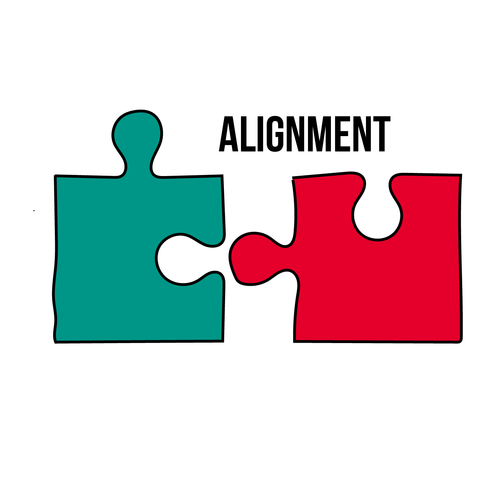
National Health Education Standards (NHES)
- 12.5 Propose ways to reduce or prevent injuries and health problems, such as diabetes.
- 12.3 Work cooperatively as an advocate for improving personal, family, and community health concerning diabetes
Wellness Guidelines
- Decrease sugary beverage consumption
- Decrease junk food consumption
- Increase the frequency of physical activity

- Instruction: In a group or think-pair-share format, have participants discuss the following questions. Acknowledge those who have progressed toward their goal(s) and encourage anyone who wants to change or modify their goal to get 1:1 support.
- Share: Let’s discuss our SMART Goals.
- How is it going with your current SMART goal?
- What are some ways you can improve progress towards your goal? (Grows)
- What are some ways you are doing well with progress towards your goal? (Glows)
GUIDELINE: Decrease Sugary Beverage Consumption
- Share: What guideline do you think is related to today’s lesson? Who has a SMART Goal related to this guideline?
- Instruction: Select one activity.
- Guideline Popcorn: The group lists all 8 guidelines rapidly in popcorn format.
- Guideline Charades: Divide participants into groups and assign each a guideline. Each group has to silently act out the guideline for the rest to guess.
- Two Truths and One Lie:
- Truth 1: People who are insulin resistance are more likely to develop type 2 diabetes.
- Truth 2: Type 2 diabetes is the most common form of diabetes.
- Lie: Type 2 diabetes is not preventable.
- Share: Type 2 diabetes risk can be cut half with certain lifestyle behaviors (such as eating healthy and increasing physical activity) and controlling body weight. We will be learning more about this today!
- Questions to discuss and/or journal:
- What do you know about diabetes?
- What do you think is the relationship between sugar and diabetes?
- Are there other words/terms that people use to say they have diabetes? (i.e., I have high sugar, I have sugar, sugar diabetes)
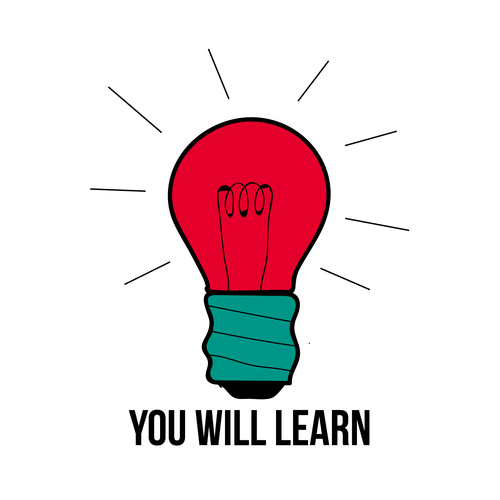
- How does type 2 diabetes differ from type 1 diabetes and what you can do to prevent and control type 2.

- Worksheets
- Slide presentation
- Blank paper
- Pancreas sign
- Insulin sign
- Plastic bin labeled “Cell”
- 3 beach balls labeled “Glucose”
- Red material or butcher paper
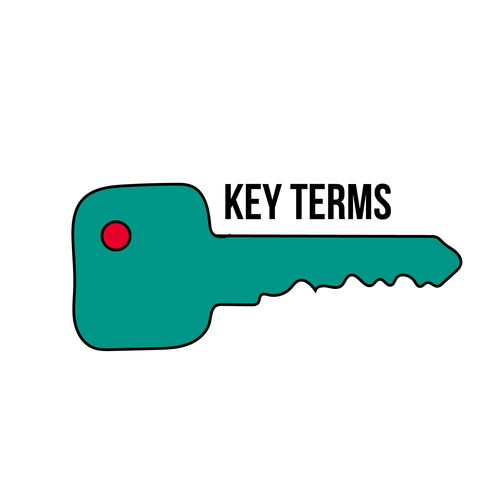
[As defined by NIDDK, 2017; Harvard School of Public Health, 2017; Michigan State University, 2013; Merriam-Webster Dictionary, n.d.]
- Type 1 Diabetes also known as Insulin-Dependent Diabetes (T1D): A chronic condition where your immune system attacks and destroys the cells in your pancreas that make insulin.
- Insulin: A hormone made by the pancreas that helps glucose from food get into your cells to be used for energy.
- Glucose: A carbohydrate (sugar) that serve as your main source of energy and comes from the food you eat.
- Pancreas: An organ located behind the lower part of your stomach. The pancreas makes the hormone insulin to control blood glucose and also makes enzymes and fluids for digestion.
- Type 2 Diabetes (T2D) also known as Adult-Onset Diabetes (T2D): A chronic condition where your body does not make or use insulin well, so your blood glucose is too high. This is the most common type of diabetes.
- Carbohydrate: One of the macronutrients and a source of energy. They include sugars, starches, and fiber. They provide your body with the energy to move, digest your food and maintain organ function.
- Insulin Resistance: A condition where muscle, fat, and liver cells do not respond properly to insulin and thus cannot easily absorb glucose from the bloodstream. As a result, the body needs higher levels of insulin to help glucose enter cells.
- Gram: A gram is a unit of mass. A gram of sugar is equal to about 1/4 tsp by volume.
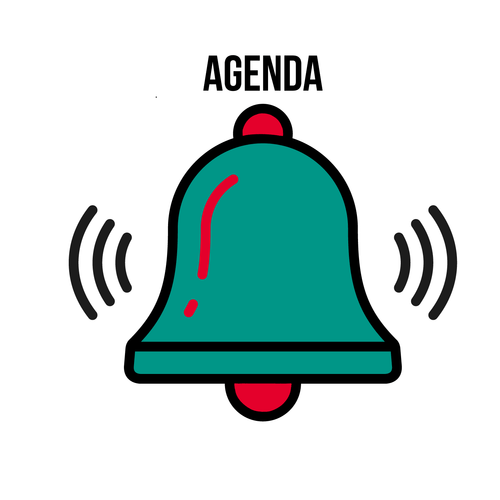
- Do Now
- Type 1 vs. Type 2
- Cells Need Energy
- Blood Sugar Roller Coaster
- Exit Ticket
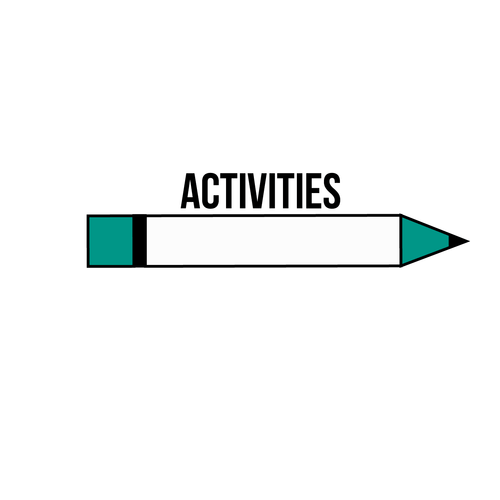
Do Now:
- Instruction:
- Have participants answer the following question on their worksheet or by sharing out loud.
- Do you know anyone with diabetes?
- What causes diabetes? Is it genetic (passed down to you from parents)?
- Can we prevent diabetes?
- Have participants answer the following question on their worksheet or by sharing out loud.
- Instruction:
- Grab a marker and draw out a garden on a poster, whiteboard, or flipchart. Draw out a few seeds planted under the ground.
- Ask the participants if those seeds will grow if we do nothing to it (no water, no rich soil, and no sun). Nothing will happen!
- Ask participants what will happen if they get sun every day, watered frequently, and covered with rich soil. They will grow into big plants!
- Share:
- Now imagine if each one of those seeds we drew represents a different preventable disease that might be passed down to us through our genes.
- Responses may include cancer heart disease, diabetes, obesity, etc.
- What are the kinds of things in our life would help these “seeds” grow?
- Responses may include not exercising, eating unhealthy diets (a lot of sugary foods, junk foods, not getting enough nutrients, etc.), discouraging ourselves, etc.
- Water is hydration, the soil is the vitamins and mineral supplements, and the sun is our food.
- Although some people may be more likely to get certain diseases because of their genes, we all have a choice on whether or not we supply our own “seeds” with the fuel to grow into a full disease. Don’t give it a reason to grow!
- Now imagine if each one of those seeds we drew represents a different preventable disease that might be passed down to us through our genes.
Good to Know: Type 1 vs. Type 2
- Share:
- Diabetes is a disease that occurs when your blood sugar is too high. There are both environmental and genetic factors that contribute to the disease. Possible complications arising from diabetes include (NIDDK, 2017):
- Heart disease/stroke
- Nerve damage
- Kidney disease
- Eye disease
- There are two main types of diabetes: Type 1 and Type 2 diabetes.
- Today, we’ll be discussing how the two types differ from one another as well as how someone can prevent and even control diabetes depending on which type he/she has.
- Diabetes is a disease that occurs when your blood sugar is too high. There are both environmental and genetic factors that contribute to the disease. Possible complications arising from diabetes include (NIDDK, 2017):
- Share:
- Type 1 (T1D) diabetes formerly called insulin-dependent diabetes or juvenile diabetes frequently develops during childhood when the immune system attacks and destroys the cells in the pancreas (NIDDK, 2017). About 5% of people with diabetes have T1D (NIDDK, 2017).
- As a result, the pancreas makes little or no insulin. Insulin is a hormone made by the pancreas that helps glucose from food get into your cells to be used for energy (NIDDK, 2017). Glucose is a carbohydrate (sugar) that serve as your main source of energy and comes from the food you eat (NIH, 2017).
- Without insulin, glucose can’t get into cells, and blood glucose rises above normal. Type 1 diabetes is always treated with insulin. Scientists aren’t sure what causes type 1 diabetes. It is not contagious and it is not caused by eating sugar. Research is underway to find the exact causes of type 1 diabetes and how it might be prevented. (American Diabetes Association, n.d.)
- Share:
- Meanwhile, type 2 diabetes formerly called adult-onset diabetes (T2D) occurs when your body does not make or use insulin well, so your blood glucose is too high. In other words, too much glucose stays in your blood, and not enough reaches your cells. Type 2 diabetes is the most common type of diabetes.
- An estimated of 30.3 million people in the U.S. (9.4% of the U.S. population) have diabetes, which is around 9.4% of the total population.
- An estimated 84.1 million adults in the U.S. ages 18 years or older (33.9% of U.S. adults) have pre-diabetes.
- T2D accounts for 90-95% of all diabetes cases and T2D is preventable with healthier lifestyle choices.
- The total estimated cost of diagnosed diabetes in the United States in 2012 was $245 BILLION (CDC, 2017).
- Risk factors for type 2 diabetes include (NIDDK, 2017):
- Overweight or obese
- Insulin resistance
- Lack of physical activity
- Genes (race, family history, etc.)
- Age
- The good news is that you can take steps to prevent/delay/manage type 2 diabetes. What are the possible steps to prevent/delay type 2 diabetes?
- Some of the examples can include:
- For Adolescents [CDC, 2017] CDC recommendations can be founded at https://www.cdc.gov/features/prevent...ids/index.html:
- Make favorite foods healthier.
- Get kids involved in making healthier meals.
- Eat slowly—it takes at least 20 minutes to start feeling full.
- Eat at the dinner table only, not in front of the TV or computer.
- Shop for food together.
- Shop on a full stomach so you’re not tempted to buy unhealthy food.
- Teach your kids to read food labels to understand which foods are healthiest.
- Have meals together as a family as often as you can.
- Don’t put serving dishes on the table.
- Serve small portions; let kids ask for seconds.
- Aim to get 60 minutes of physical activity a day, in several 10- or 15-minute sessions or all at once.
- Start slow and build up.
- Keep it positive—focus on progress.
- Take parent and kid fitness classes together.
- Ask kids what activities they like best—everyone is different.
- Encourage kids or yourself to join a sports team.
- Have a “fit kit” available—a jump rope, hand weights, resistance bands.
- Limit screen time to 2 hours a day.
- Plan active outings, like hiking or biking.
- Take walks.
- Move more in and out of the house—vacuuming, raking leaves, gardening.
- Turn chores into games, like racing to see how fast you can clean the house.
- For Adults [NIDDK, 2015] NIDDK recommendations can be founded at https://www.niddk.nih.gov/health-inf...ype-2-diabetes.
- Maintain a healthy weight. You may be able to prevent or delay diabetes by losing 5 to 7 percent of your starting weight. For instance, if you weigh 200 pounds, your goal would be to lose about 10 to 14 pounds.
- Move more. Get at least 30 minutes of physical activity 5 days a week. If you have not been active, talk with your health care professional about which activities are best. Start slowly to build up to your goal.
- Eat healthy foods most of the time. Eat smaller portions to reduce the number of calories you eat each day and help you lose weight. Choosing foods with less fat is another way to reduce calories. Drink water instead of sweetened beverages.
- For Adolescents [CDC, 2017] CDC recommendations can be founded at https://www.cdc.gov/features/prevent...ids/index.html:
- Meanwhile, type 2 diabetes formerly called adult-onset diabetes (T2D) occurs when your body does not make or use insulin well, so your blood glucose is too high. In other words, too much glucose stays in your blood, and not enough reaches your cells. Type 2 diabetes is the most common type of diabetes.
Hands-On: Cells Need Energy
- Set Up:
- Have one participant hold a “PANCREAS” sign, and have another holds an “INSULIN” sign.
- Three participants get beach balls labeled “GLUCOSE.” If you have more beach balls, you can have more participants join in.
- Have one participant hold a plastic bin labeled “CELL.”
- Lay out a piece of red material or butcher paper on the ground to represent the bloodstream.
- Instruction:
- Instruct PANCREAS and INSULIN to stand together in one corner of the room while the “red carpet” is in the middle of the room.
- Have CELL stand in the other corner of the room.
- Share:
- Today, we will be acting out the following scenarios: a normal process in a healthy body, type 1 diabetes, and type 2 diabetes.
- Normal:
- This is how your body would be like without diabetes.
- You eat a banana. This banana is digested, and glucose is absorbed into the blood through the small intestine.
- GLUCOSE participants should throw their beach balls into the blood.
- Now that glucose is in the blood, it needs to go somewhere! Where does it need to go? The cell!
- CELL, please hold up your bin for everyone to see.
- Insulin’s job is to deliver glucose into the cell.
- PANCREAS should gently push INSULIN onto the blood.
- INSULIN should then pick up the glucose balls from the blood and throw them into the cell.
- Type 1 Diabetes:
- Because the pancreas is on permanent vacation, PANCREAS will actually go to the back of the room (away from the demo).
- Again, you eat a banana. This banana is digested, and glucose is absorbed into the blood through the small intestine.
- GLUCOSE participants should throw their beach balls into the blood.
- However, this time, the glucose remains in the bloodstream since the pancreas doesn’t make insulin. No energy is ever delivered to the cell!
- Type 2 Diabetes:
- Again, you eat a banana. This banana is digested, and glucose is absorbed into the blood through the small intestine.
- GLUCOSE participants should throw their beach balls into the blood.
- PANCREAS should gently push INSULIN onto the blood.
- However, because your body is not making or using insulin efficiently, this time INSULIN will only be able to use ONE hand to pick up the balls.
- It can take some of the glucose, but not all of it, leaving the blood glucose level to be higher than normal.
- Oral medication, extra insulin, healthy diet, and exercise can help insulin get its missing hand back!
- Share:
- What would be the difference in beach balls (aka glucose) if I ate a candy bar instead of a banana?
- It would be as if everyone in the class had a beach ball and we all threw them on the red carpet at the same time!
- What would be the difference in beach balls (aka glucose) if I ate a candy bar instead of a banana?
Real World Relevance: Blood Sugar Roller Coaster
- Share:
- When we eat sugars or carbohydrates, we need insulin to help push the extra sugar in our bloodstream into our cells. Carbohydrates are one of the macronutrients and a source of energy. They include sugars, starches, and fiber. They provide your body with the energy to move, digest your food and maintain organ function (Harvard School of Public Health, 2017).
- Share:
- Our blood sugar spikes when we consuming carbohydrates which are known as a “Sugar Spike.” Along with the “Sugar Spike,” an insulin spike will occur as well as your body tries to absorb all that sugar in your bloodstream (Harvard School of Public Health, n.d.).
- Not long after that spike, you will have a “Sugar Crash” and blood sugar levels will dip below normal (Harvard School of Public Health, n.d.).
- When that happens, you may feel tired and crave foods high in carbohydrate/sugar to bring blood sugar back to normal.
- Raise your hand if this has ever happened to you. Does anyone want to share that experience?
- Over time, repeated blood sugar and insulin spikes and crashes can cause our cells to become “insulin resistant” and ultimately develop type 2 diabetes. Insulin resistance is a condition where muscle, fat, and liver cells do not respond properly to insulin and thus cannot easily absorb glucose from the bloodstream (NIDDK, 2009).
- That is why when you make food choices, it’s important to think about the amount of sugar and total carbohydrates in them.
- Often, sugar and carbohydrates are recorded in grams. What is a gram? A gram is a unit of mass. A gram of sugar is equal to about 1/4 tsp by volume (Michigan State University, 2013).
- Here are some examples:
- 12-ounce can of soda: around 39 g of sugar
- Milk chocolate candy bar: around 44 g of total carbohydrates or 35 g sugar
- Bagel: around 48 g of total carbohydrates and 6 g of sugar (USDA, n.d.)
- Note: Have some type of visual for each of the following examples (put sugar cubes in a baggie, etc.).
- Instruction:
- Optional: Play video on how carbohydrates affect health: youtu.be/wxzc_2c6GMg
- Ask participants for three examples of high sugar or refined/processed carbohydrates. For each example, go online to determine the amount of sugar (in grams) that food item has. If it’s not possible to go online or participants can’t think of an example, suggest:
- Instant mac n cheese: 47 g total carb per serving ≈ 12 tsp of sugar
- 2 slices white bread: 30 g total carb = 7.5 tsp of sugar
- 1 cup corn flakes: 24 g total carb = 6 tsp of sugar
- Have participants calculate the equivalent teaspoons of sugar. To calculate the teaspoon-equivalent, take the number of grams and divide by four (4) to get the number of teaspoons. In other words, one teaspoon of sugar equals four grams (Michigan State University, 2013).
- Share:
- So what should you eat? The goal is to keep blood sugar steady, so you can avoid the sugar spikes and crashes.
- A variety of the following foods would help you avoid blood sugar spikes and crashes while keeping you full (USDA & HHS, 2015):
- Fruits and vegetables: veggies (like broccoli, kale, asparagus, avocado, tomatoes, etc.) are full of fiber and vitamins & minerals)
- Lean protein
- Healthy fats: from nuts, olive oil, avocado, even butter in small amounts
- Whole grains: choose whole grains like whole wheat bread, brown rice, steel cut oatmeal that contain a lot of fiber over white bread, white rice, processed cereals.

Exit Ticket:
- Instruction:
- Have participants write on their worksheet or share out loud the following question(s).
- Imagine a life with and without diabetes. What are some benefits of both?
- What are some steps you will take to prevent or manage diabetes? Be specific!
- Have participants write on their worksheet or share out loud the following question(s).
Special thank you to our partners at Atkins for supporting the content of this lesson:
Atkins Nutritionals, Inc. (Atkins) is a consumer lifestyle and packaged goods brand with a 50-year legacy of helping individuals reach their weight management goals by making better choices about the best foods to eat. With a well-balanced approach to nutrition emphasizing a wide array of vegetables, proteins, healthy fats, and fiber-rich carbohydrates, Atkins is committed to educating and empowering people on living healthier lives with an increased awareness about controlling carbohydrates, leading to balanced blood sugar, sustained energy, and improved health markers in the long term.
Bibliography
- American Diabetes Association. (n.d.) Explore Type 1 diabetes. Retrieved From: https://professional.diabetes.org/si...a/type_1_1.pdf
- Centers for Disease Control and Prevention. (2017). National Diabetes Statistics Report. Retrieved From: ww.cdc.gov/diabetes/pdfs/dat...ics-report.pdf
- Center for Disease Control and Prevention. (2017). Prevent Type 2 Diabetes in Kids. Retrieved From: https://www.cdc.gov/features/prevent...ids/index.html
- Harvard School of Public Health. (n.d.). Carbohydrates. Retrieved From: https://www.hsph.harvard.edu/nutritionsource/carbohydrates/
- Harvard School of Public Health. (n.d.). Carbohydrates and blood sugar. Retrieved From: https://www.hsph.harvard.edu/nutritionsource/carbohydrates/carbohydrates-and-blood-sugar/
- Michigan State University. (2013). How to convert grams of sugars into teaspoons. Retrieved From: http://msue.anr.msu.edu/news/how_to_...into_teaspoons
- National Institute of Diabetes and Digestive and Kidney Diseases. (2017). Insulin resistance. Retrieved From: https://www.niddk.nih.gov/health-inf...lin-resistance
- National Institute of Diabetes and Digestive and Kidney Diseases. (2016). What is diabetes? Retrieved From: https://www.niddk.nih.gov/health-inf...at-is-diabetes
- National Institute of Diabetes and Digestive and Kidney Diseases. (2017). Type 1 diabetes. Retrieved From: https://www.niddk.nih.gov/health-inf...ype-1-diabetes
- National Institute of Diabetes and Digestive and Kidney Diseases. (2017). Type 2 diabetes. Retrieved From: https://www.niddk.nih.gov/health-information/diabetes/overview/what-is-diabetes/type-2-diabetes
- National Institute of Diabetes and Digestive and Kidney Diseases (2015). Preventing Type 2 Diabetes. Retrieved From: https://www.niddk.nih.gov/health-inf...ype-2-diabetes
- Merriam-Webster Dictionary. (n.d.). Gram. Retrieved From: https://www.merriam-webster.com/dictionary/gram
- TED-Ed. (2016). How do carbohydrates impact your health? – Richard J Wood. Retrieved From: youtu.be/wxzc_2c6GMg
- S. Department of Agriculture & U.S Department of Health and Human Services. (2015). Dietary Guidelines for Americans. Retrieved From: https://health.gov/dietaryguidelines...Guidelines.pdf

- TED-Ed. (2015). What does the pancreas do? Retrieved From: youtu.be/8dgoeYPoE-0
- Optional Hands-On Activity: Dunking on Diabetes
- Set-up: Get one of that hang-on-a-door basketball hoop. Hang it somewhere in the room. Place a piece of paper on the hoop (or backboard) that says “Cell.” Get a ball ready that says “Glucose” on it. Make a lanyard that has the nametag “Insulin.” A piece of paper that says “Insulin” with tape would also work. Make a stripe with tape on the floor to represent the free throw line shot. Find online the percentage of people with diabetes in your state. Write that percentage on the whiteboard or poster/flipchart. Create a tally on the whiteboard or poster/flipchart with two categories: Diabetes and No Diabetes.
- Instruction: Invite participants to come up to the line and be “insulin.” If they shoot the “Glucose” into the “Cell,” then they can mark a tally under “No diabetes.” If they miss the shot, they m diabetes. Allow 10-15 participants to come up and shoot. See if your class beats the percentage of your state.
- Note: For an additional component, add in a “defense” of 2-3 participants that try to distract the insulin from getting the glucose into the cell. Their names can be “Lack of Exercise,” “Fast Food,” “Processed Foods,” “Soda,” etc
This lesson was created in partnership with Albert Einstein College of Medicine Department of Epidemiology and Population Health with funding support by the National Institutes of Health NIDDK Grant R01DK09709.

